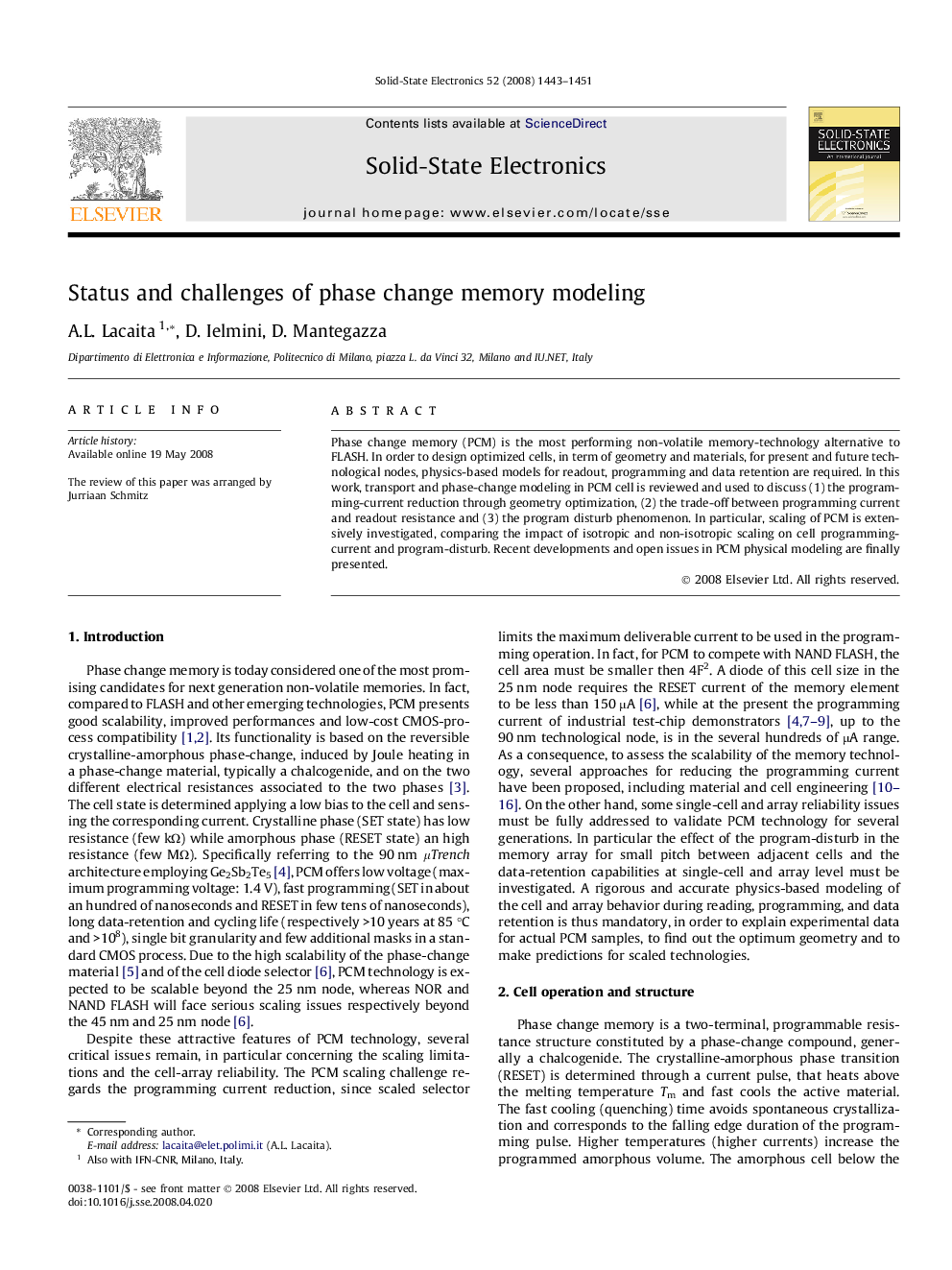| کد مقاله | کد نشریه | سال انتشار | مقاله انگلیسی | نسخه تمام متن |
|---|---|---|---|---|
| 749016 | 894801 | 2008 | 9 صفحه PDF | دانلود رایگان |

Phase change memory (PCM) is the most performing non-volatile memory-technology alternative to FLASH. In order to design optimized cells, in term of geometry and materials, for present and future technological nodes, physics-based models for readout, programming and data retention are required. In this work, transport and phase-change modeling in PCM cell is reviewed and used to discuss (1) the programming-current reduction through geometry optimization, (2) the trade-off between programming current and readout resistance and (3) the program disturb phenomenon. In particular, scaling of PCM is extensively investigated, comparing the impact of isotropic and non-isotropic scaling on cell programming-current and program-disturb. Recent developments and open issues in PCM physical modeling are finally presented.
Journal: Solid-State Electronics - Volume 52, Issue 9, September 2008, Pages 1443–1451